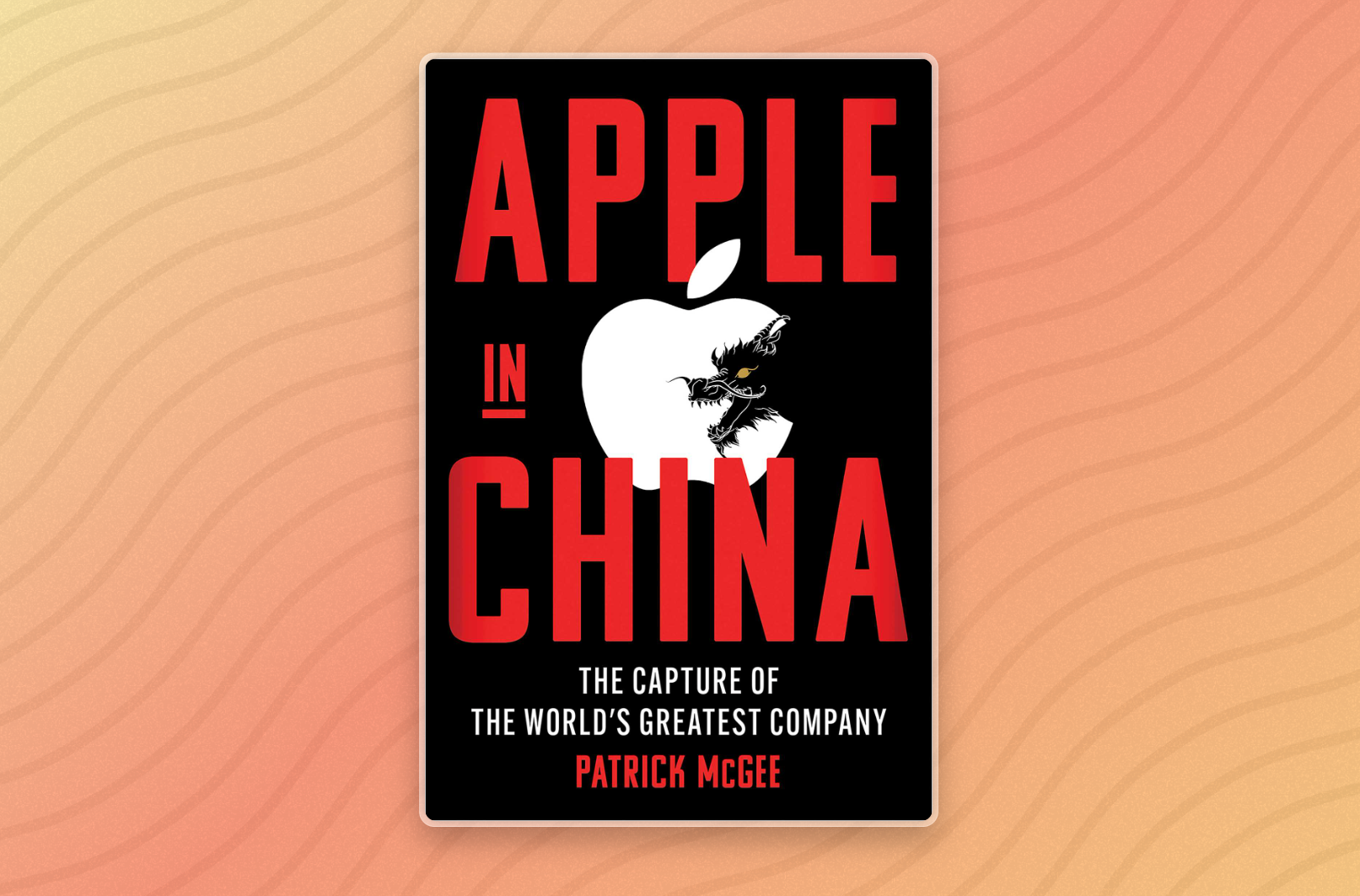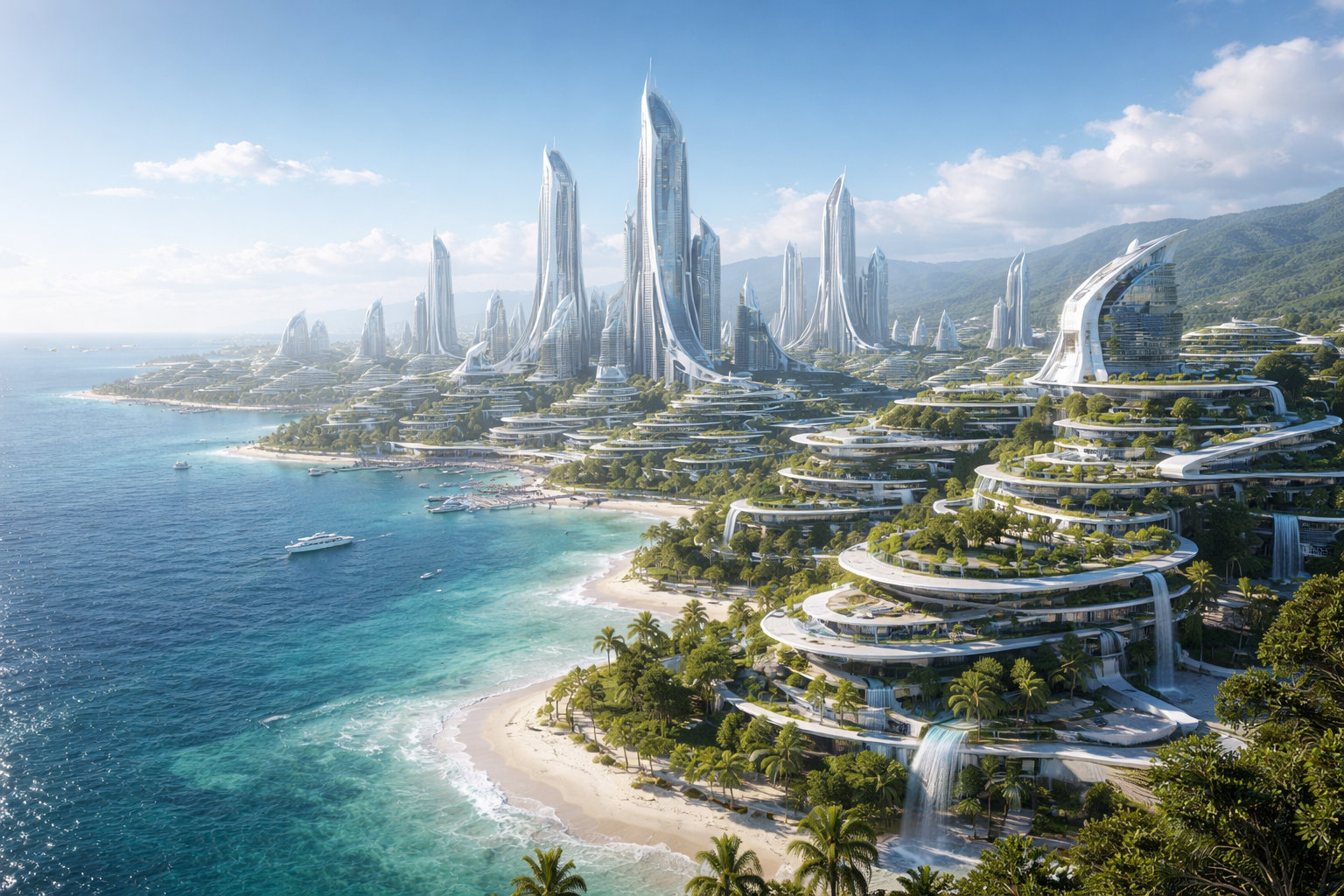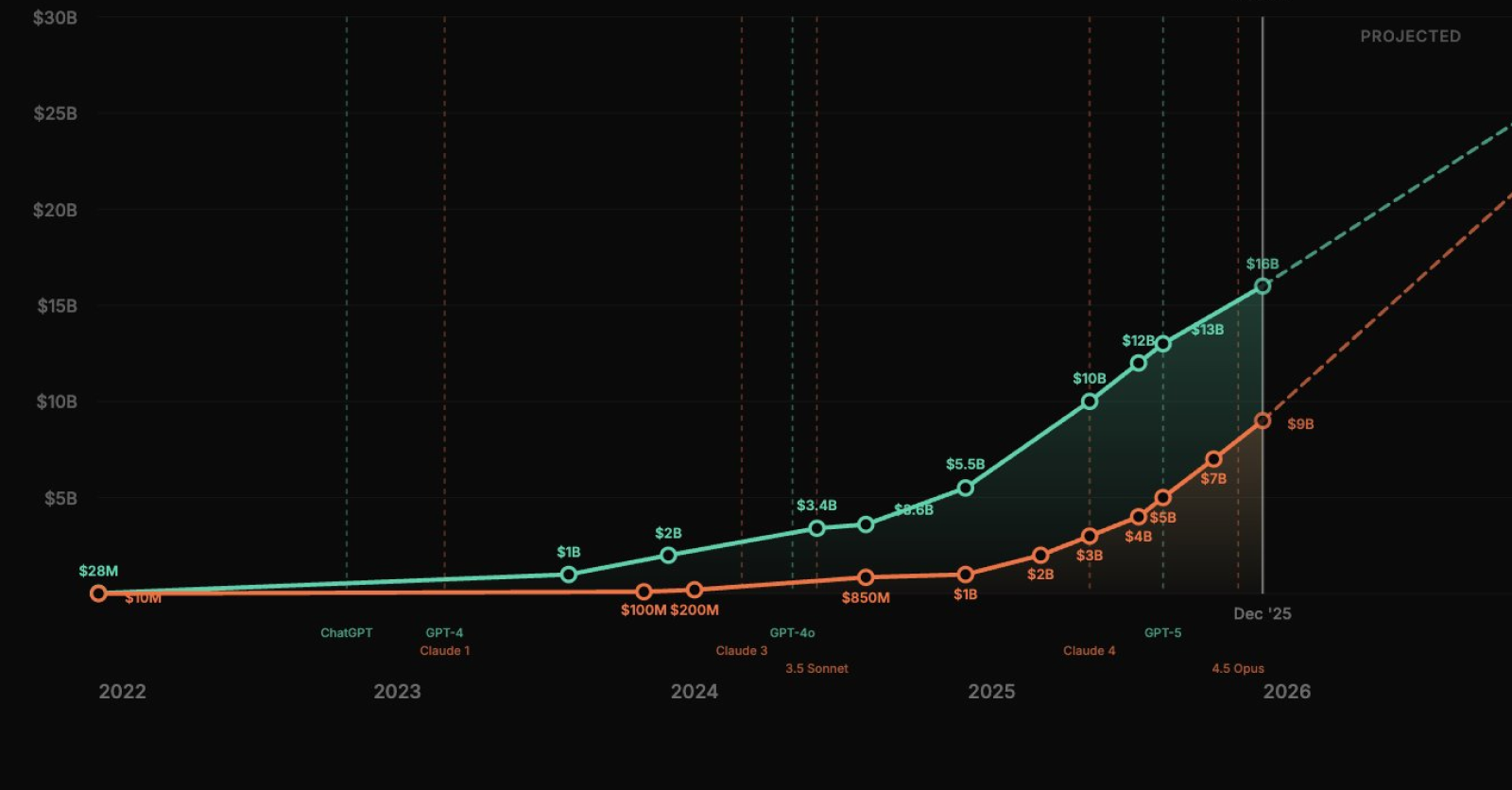Highlights from Apple in China
Patrick McGee’s book reveals how Apple’s unique manufacturing approach not only reshaped China’s tech industry but also left the company navigating a delicate geopolitical tightrope.

I have finished Apple in China by Patrick McGee, a fantastic book dissecting the history of manufacturing and breaking up some common myths around it.
There’s an uncanny quality about adversarial books and media stories like this. Patrick has talked to dozens of people who worked at Apple or their partners. But there’s always a bias in terms of who is willing to talk — mostly the people who didn’t leave the company on good terms. Jeff Williams, Apple’s former COO, isn’t joining that meeting invite. But the people who had issues with the management, disagreed with their “ignorant” strategies or believed they were wronged would. They might also use this as an opportunity to remake their story, so we have to trust the writer to build a complete picture from multiple sources. Throughout the book I was getting just a touch of that feeling, but I believe Patrick McGee did a very good job overall.
We know our devices are made in China. We saw the label on the back and maybe have heard about companies like Foxconn and workers operating these human “conveyor belts”. And while, admittedly, it is a part of the picture, Patrick argues that we’re missing the forest for the trees.
Apple hasn’t moved to China because the workforce there is cheap. In fact, it was one of the last companies to offshore it manufacturing. Following the return of Steve Jobs, Apple continued using US-based manufacturers but struggled so much with the iMac it had to look outward. First to Japan and Taiwan, and later to China, as local companies propped up by local governments and lax regulations enabled to stimulate growth fiercely competed for their business. And as a result, China built an ecosystem of manufacturers and suppliers where you can do and build practically anything you can dream of.
As Patrick says:
The prevailing Western narrative about Apple in China is remarkably narrow. The go-to story of the past two decades has been about the tedium of assembling Apple products—a tale of low wages, underage employees, sixteen-hour workdays, suicides at Foxconn, and accusations of forced Uighur labor. This narrative isn’t wrong, but it misses the biggest piece of the puzzle: It’s not merely that Apple has exploited Chinese workers, it’s that Beijing has allowed Apple to exploit its workers, so that China can in turn exploit Apple.
You see, China was trying to catch up in the technology and manufacturing and after their acceptance into the WTO looked for semi-legal ways to import the technological know-how. And according to the book, Apple became the perfect partner.
Apple had essentially cracked the code on how to manufacture the world’s best products without doing any of the manufacturing itself. It wasn’t really “outsourcing” in the normal sense—that would imply it was sending blueprints to companies capable of taking the orders and executing. Instead, Apple was routinely sending its top engineers, designers, procurement specialists, and lawyers from the United States into hundreds of factories across the country, where they’d import machinery, train armies of workers, coordinate the delivery of intermediate goods, and scrutinize suppliers to ensure compliance.
And the most ambitious claim this book makes is that Apple uplifted the entire China’s manufacturing by bringing its talented engineers, educating manufacturers and pushing suppliers to their limit to raise quality.
China wouldn’t be China today without Apple. Its investments in the country have been spectacular, rivaling nation-building efforts in cost, man-hours, and impact. Apple itself estimates that since 2008 it has trained at least 28 million workers—more people than the entire labor force of California. China brilliantly played its long-term interests against Apple’s short-term needs. In 1999, none of Apple’s products were made in mainland China; by 2009, virtually all were.
In fact, the book devotes a lot of space telling the story of Apple’s struggles in China because their approach was too unusual. China had come up with a simple system of requiring foreign companies to set up joint ventures with the idea that local partners would master the necessary skills to start building the tech themselves.
The party’s whole reform program was meant to lure in capital and Western businesses as a way of learning, so China could reverse-engineer the technology, replicate it, and then replace it.
But unlike Samsung and all other corporations, Apple didn’t have a joint venture nor did it own any factories itself. Instead, it was sending engineers that would train workers and bought billions of dollars of equipment that was used by them.
Years before Uber would become the largest taxi provider without owning a single vehicle or Airbnb would grow into the largest accommodation provider without owning any real estate, Apple was discovering how to be the world’s largest manufacturer without owning any factories. <…> It was working so intimately with suppliers that it had come up with a new offshoring model altogether. It married the best of both worlds, imposing a zealous level of control over its manufacturing processes, but with the lower costs and added flexibility of not actually running a factory.
And Apple is brutal in their demands to both quality and costs. The company is known to extract all the margins out of its suppliers for itself. Analysts report Apple earns ~80% of all smartphone profits, even though its shipment share is in the teens (~19%). Some suppliers were so eager to work with Apple they offered to do order at cost. Why?
Suppliers would put up with this seemingly inequitable deal because they got something less tangible but more valuable than profits. They got engineering help from Apple’s best—tuition-free, on-the-ground training—for multiple hours a day, day after day, for weeks and months leading up to a product launch. “So the reason Apple gets Chinese suppliers to work for them, for zero profits, is because the Apple ops engineer, following Tim Cook’s orders, is sleeping on a mat in their factory and helping them make that line efficient,” Guthrie says.
Apple wasn’t just coming to factories to place an order. Most of these were much smaller organizations that had to be expanded drastically. And managers who knew how to work the provinces’ leadership and get manpower and land would go all-in.
When Foxconn wanted to expand from cables to building the iPod, they reversed-engineer the device from available components and demonstrated it to Apple to prove they can do this. Apple’s employees were astonished as the device was almost indistinguishable from the real thing.
There was no way Apple could send the specs to some factory and wait for the parts to be built; instead, it sent teams of engineers to Japan, Korea, Taiwan, and China to find hungry vendors it could work with to co-create the processes. “There were a few truly groundbreaking mass production processes we were involved with, where we really had to go around to find the best people in the entire world—the peak of what humans have developed for some of these technologies,” says a product manager.
Apple seemingly understood that anything they build in China would be copied, just like it happened with all other companies. So their strategy became to always stay at the bleeding edge of what was possible. And then, their inventions become the industry norm. The book retells the famous anecdote about the invention of scratch-resistant glass for the iPhone.
Jobs reached out to Wendell Weeks, CEO of Corning, a glassmaker in upstate New York, saying he needed the hardest glass they could make. Weeks told Jobs about Gorilla Glass, something Corning had developed for fighter-jet cockpits back in the 1960s. They’d never found a market for it and abandoned the project. Now, this glass is practically in every flagship phone.
The volume of devices shipped by Apple is so big and grows so quickly, the suppliers who were able to scale along ended up selling to them almost exclusively.
Overdependence on Apple could create trouble, because Cupertino had a propensity to shift directions. So if, say, a company providing a key component was 80 percent dependent on iPhone revenue, and Apple made a design change obviating the need for that component, that company might collapse. In fact, many did; this happened repeatedly, and it caused Apple problems, including negative headlines in the media and bad will from suppliers. So Apple learned to find a sweet spot: to be the most important client for its suppliers, so it had leverage, but not so much that the supplier was overly reliant. The upshot of this policy, as a senior executive put it, was that “whatever rate we’re growing at, they have to grow that fast with someone else.” So as iPhone shipments soared, Apple encouraged its China-based suppliers to feed the Android market. As a result, Apple gave birth to the Chinese smartphone industry.
At first, China looked Apple with suspicion and frustration, simply because of how secretive and unusual their approach was. There was no joint venture! So Apple gathered a team and flew Tim Cook to give CCP a presentation where he explained what they were doing and commited to spending over $260Bn until 2021. Not even as some grand gesture, merely multiplying what Apple was spending annually already.
The suppliers and manufacturers of Apple devices leveraged the same know-how to help create Huawei, Xiaomi, Oppo, and Vivo, who collectively dominate the Chinese market and are actively expanding outward.
The ascent of China’s smartphone sector spoke volumes about Apple’s dependence on the very capabilities it had orchestrated, underscoring how China had gone from a land of cheap labor to one of sophisticated automation.
This statement might sound ambitious, but without having a single first-party factory in China, it was still one of the most frequent destination for the company’s engineers and managers.
Apple had been sending so many engineers to China on temporary trips that Cupertino convinced United Airlines to begin direct flights from San Francisco to Chengdu, three times a week, arguing that Apple would regularly buy enough of the thirty-six first-class seats to make it profitable. The 6,857-mile flight became United’s longest nonstop flight.
And when COVID-19 shut down airlines, Apple sent their engineers by jet.
United halted nonstop flights from San Francisco to Shanghai from March to October 2020. So Apple scrambled the jets. In the spring, Cupertino began sending engineers to Shanghai on private planes departing from San Jose, with a pit stop in Alaska. “Each jet could hold thirteen people, but we only sat six,” says a person familiar with the flights. “We wanted room and, you know, we’re Apple.”
The dramatic shift of high-tech manufacturing capabilities happened in just about three decades. And the result were so drastic, so when Apple tried to build Mac Pro in the US to placate Trump, it had to fly engineers from Foxconn to set it up
…the project made it only because Apple leveraged relationships with suppliers in the one country where it knew the talent existed. “We flew people from China to get it fixed,” one of the engineers says. “People working for Foxconn.” The irony is hard to overstate.
The last part of the book is about the peculiar position Apple now finds itself, stuck between the geopolitical ambitions of Xi’s China and the new reversal of domestic policies in the US, along with added risks around Taiwan and TSMC.
The company that once positioned itself as a rebel now forced to give up control over iCloud in China to local “partners” along with the encryption keys, remove VPNs and The New York Times from the AppStore and avoid critisizing China in any Apple TV+ content.
In 2017, explaining why corporate executives should be more up-front about their values and “lead accordingly,” Cook had told journalist Megan Murphy that “silence is the ultimate consent.” He went on: If you see something going on that’s not right, the most powerful form of consent is to say nothing.
Tim Cook has been an extremely succesful and ruthless CEO who made Apple one of the world’s richest companies. But he also made it hightly dependent on China during the worst deterioration of local political freedoms and their relationships with the United States. We will see what comes out of it.
If you liked this article, subscribe to get new content right in your inbox! I also run a weekly newsletter with five amusingly interesting links on technology, history, and culture.




